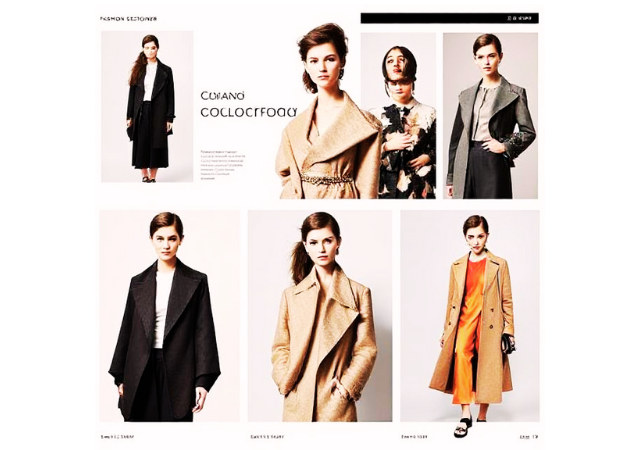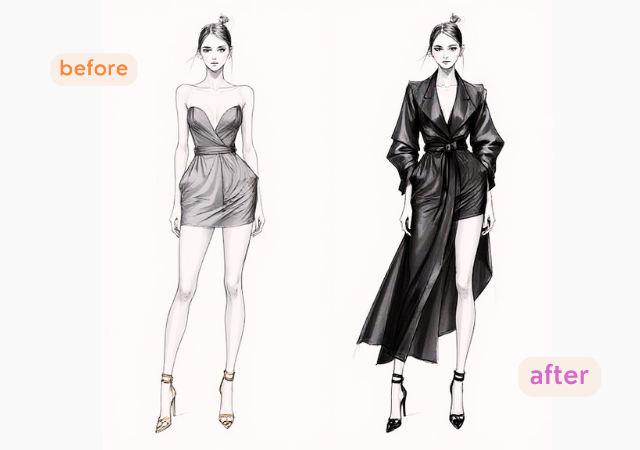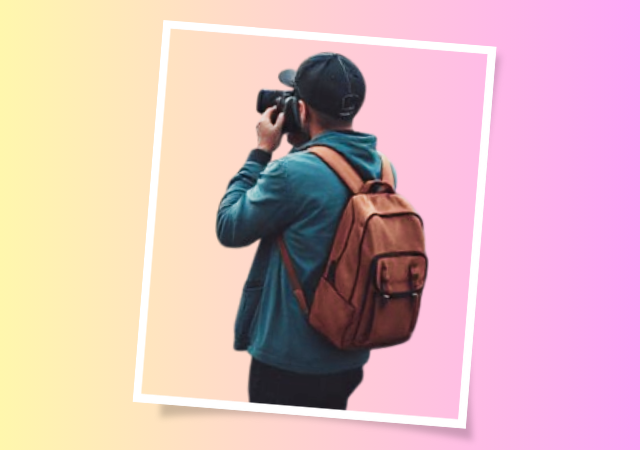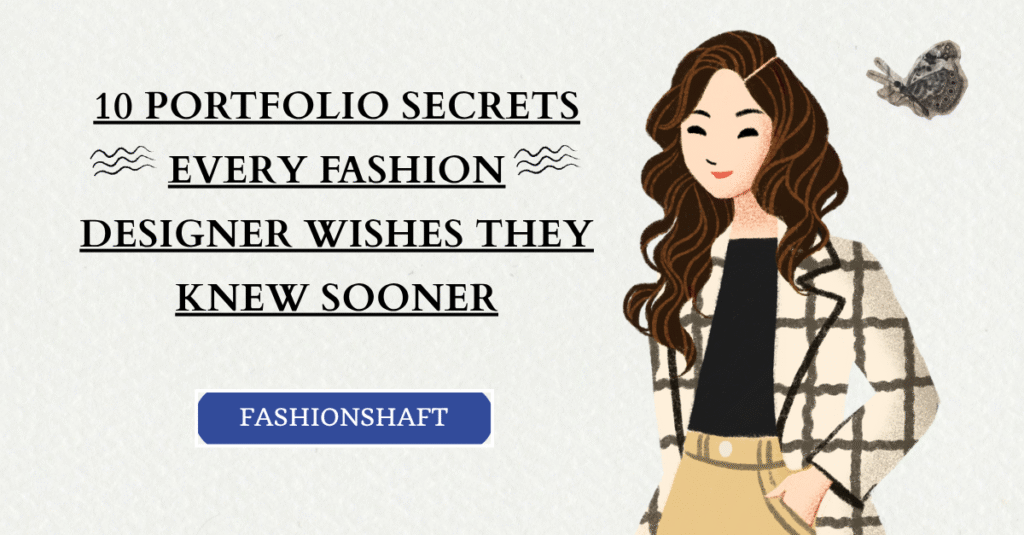10 Portfolio Secrets Every Fashion Designer Wishes They Knew Sooner
Introduction:
Let’s be real—your fashion portfolio isn’t just a collection of pretty sketches. It’s your career’s golden ticket. Yet, most designers (yes, even the crazy-talented ones) mess it up. Too many pages. Weak storytelling. Or worse—a portfolio that looks like everyone else’s.
But what if you could skip the rookie mistakes and jump straight to pro-level tricks? The kind that get you hired, noticed, or even scouted by top brands?
After years of reviewing portfolios (and seeing what actually works), I’m sharing 10 industry secrets that’ll transform your portfolio from “meh” to “WOW—we need this designer!”
Let’s dive in.
10 Portfolio Secrets Every Fashion Designer Wishes They Knew Sooner
1. Your First Page is Your Only Chance—Make It Unforgettable

Why?
Recruiters spend less than 10 seconds deciding if they’ll keep flipping. If your first page is a boring bio or a cluttered mood board? Swipe left.
The Fix:
-
Lead with your BEST work (not your oldest).
-
Add a bold, one-sentence tagline (e.g., “Sustainable streetwear that tells a story”).
-
Use a striking visual—a high-contrast sketch, a draped fabric close-up, or a model shot with your designs.
Pro Tip: Some designers print their first page on textured paper—it’s a touchable experience that stands out.
2. Less Is More—Edit Ruthlessly
Why?
A 50-page portfolio screams “I don’t know what my style is.” Top brands want clarity, not chaos.
The Fix:
-
Show only 8-12 projects MAX.
-
Kill your darlings—if a piece doesn’t showcase your current skill level, cut it.
-
Group similar work (e.g., “Minimalist Couture” or “Avant-Garde Experimentation”).
Pro Tip: Keep a “bonus projects” link (like a QR code) for those who want to see more.
3. Tell a Story—Don’t Just Show Pretty Pictures
Why?
Anyone can sketch a dress. But can you explain the why behind it?
The Fix:
For every project, include:
✅ Inspiration (What sparked it? A film? A social issue?)
✅ Challenges (Did you work with unconventional materials?)
✅ Solutions (How did you innovate?)
Example:
“This zero-waste collection was inspired by ocean pollution—each piece uses recycled fishing nets.”
4. The Hidden Power of “Before & After”

Why?
Clients love seeing your process—it proves you’re not just lucky, but skilled.
The Fix:
-
Show early sketches vs. final garments.
-
Add fabric swatches with notes (e.g., “Rejected this silk—too stiff for the drape.”)
-
Include tech pack snippets (if applying for industry jobs).
5. Digital Portfolios? Make Them Interactive
Why?
A static PDF is forgettable. An interactive one? Unmissable.
The Fix:
-
Embed short videos (30 sec clips of fabrics moving, draping, or fittings).
-
Add clickable links (to your Instagram, online store, or press features).
-
Use a scroll-friendly layout (like Format or Adobe Portfolio).
Pro Tip: Some designers add hidden Easter eggs (like a password-protected “secret project”).
6. The Sneaky Trick: Tailor Your Portfolio for Every Job
Why?
Sending the same portfolio to Nike and Chanel? Big mistake.
The Fix:
-
Research the brand’s aesthetic—then rearrange projects to match.
-
Create multiple portfolio versions (e.g., “Sportswear Edition” or “Luxury Ready-to-Wear”).
-
Add a custom intro page (e.g., “Why I’m Inspired by [Brand’s Latest Collection]”).
7. The “Silent Killer” of Portfolios: Bad Photography

Why?
Blurry garment shots = Instant rejection.
The Fix:
-
Hire a pro photographer (or trade with a photography student).
-
Use natural light—no harsh shadows.
-
Show DETAILS (zippers, stitching, fabric texture).
Pro Tip: Flat lays are great, but add 1-2 styled shots (e.g., on a model in a cool location).
8. The Resume Hack: Blend It Into Your Portfolio
Why?
No one reads a separate resume.
The Fix:
-
Dedicate 1 page to a visual resume (timeline of experience, skills icons).
-
Highlight relevant wins (e.g., *”Designed 20+ pieces for NYC Fashion Week”*).
-
Add a QR code linking to your LinkedIn.
9. The Follow-Up Secret: Leave a “Physical” Memory
Why?
Digital portfolios get lost. Tangible ones stick.
The Fix:
-
Print a mini-zine (highlighting 3 best projects) and mail it after interviews.
-
Include a fabric swatch (glued to your business card).
-
Hand-write a thank-you note referencing their feedback.
10. The Biggest Myth: “Your Portfolio is Finished”
Why?
A portfolio is never done—it evolves as you do.
The Fix:
-
Update it every 3 months (add new work, remove old).
-
Ask for brutal feedback (from mentors, not just friends).
-
Track which projects get reactions—then make more like those.
Final Tip: (10 Portfolio Secrets Every Fashion Designer Wishes They Knew Sooner)
No secret formula beats authenticity. If your work is bold, quirky, or minimalist—own it. The right clients will find you.
Now, go edit that portfolio. And when you land your dream gig? Shoot me a message—I’d love to hear your success story.
Read More: How to Become a fashion designer and build a successful career on it.

My name is Rohit Vagh and I’m a content writer specializing in fashion and lifestyle. I have three years of experience in this field and have written various articles. My writing style is creative and engaging, and I strive to create content that resonates with my readers. I have a deep passion for fashion and am constantly researching the latest trends and styles to make sure my readers are up to date. I’m excited to continue my career in blogging, and I’m always looking for new opportunities in the fashion and lifestyle space.




